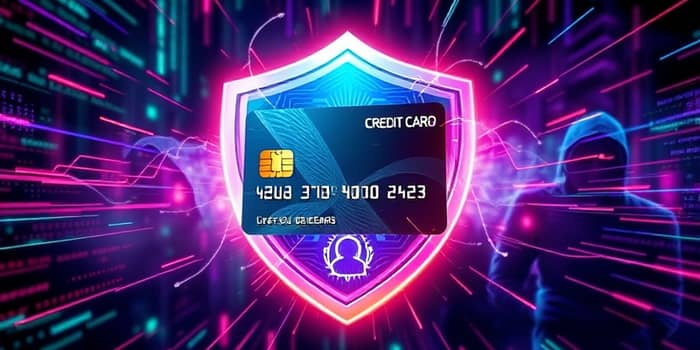
In an era where digital transactions reign supreme, safeguarding your credit cards has never been more critical. With fraud attempts rising at unprecedented rates, taking proactive steps can protect your finances and peace of mind.
Credit card fraud is on a steep upward trajectory worldwide. In the United States alone, 46% of global credit card fraud originates within its borders, making it the leading hotspot for attacks. Projections indicate that losses will swell from $32.4 billion in 2021 to $43 billion by 2026, a surge driven by more advanced digital schemes.
Recent figures reveal that attempts at credit card fraud have spiked by 46% year over year, while ecommerce-related incidents in the US have leapt by 140% over the past three years. These trends underscore the urgency of arming yourself with knowledge and robust defenses.
Contrary to popular belief, only about 8% of fraudulent charges stem from physically stolen cards. The predominant threat comes from compromised account data obtained through phishing emails, malware, public Wi-Fi interception, fake checkout pages, or large data breaches.
Phishing scams lure unsuspecting cardholders into divulging sensitive information via deceptive emails or text messages. Meanwhile, public Wi-Fi hotspots can enable hackers to intercept your transaction data if you’re not using a secure connection. Fake online merchants or cloned payment pages can harvest your card details the moment you enter them.
Once stolen, card information can be sold on the dark web or used directly for unauthorized purchases, subscription traps, and identity theft. Understanding these vectors is the first step toward dismantling them.
Many cardholders unknowingly create vulnerabilities by engaging in unsafe digital practices. According to surveys, eight in ten admit to at least one risky habit that could expose their accounts to fraud.
Recognizing these habits is crucial. By consciously avoiding them, you remove low-hanging fruit for would-be fraudsters.
Fortifying your plastic requires layering preventative measures. Here are the most effective tactics you can implement today:
Adopting these strategies creates multiple defense lines, making it exponentially harder for attackers to succeed.
No system is infallible. Should fraud occur, swift response can limit damage and expedite recovery.
Acting within hours, not days, can often reverse fraudulent transactions and protect your credit profile.
Fraud strikes across all age groups, but patterns vary. Millennials (ages 20–29) report incidents more frequently—44% lose money when targeted—likely reflecting their higher engagement in digital transactions. Seniors experience fewer attacks but tend to sustain larger losses when victimized.
Approximately 63% of US cardholders have been targeted by fraud at least once, and over half of those victims encounter fraud multiple times. The FTC reports nearly 450,000 victims suffered through fraudulent account openings. Whether you’re a tech-savvy young adult or a retiree with decades of banking history, vigilance is key.
Credit card fraud can feel like an invisible enemy, striking unexpectedly and eroding trust in our financial systems. Yet, knowledge is power. By learning how fraud occurs, identifying risky behaviors, and adopting robust protection strategies, you become the ultimate fraud fighter.
Start today: review your accounts, tighten security on your devices, and educate your family about emerging scams. With each proactive step, you bolster your defenses and reclaim control over your financial security.
Your plastic is not just a card—it’s a gateway to your hard-earned resources. Guard it wisely, stay informed, and continue to adapt as fraud tactics evolve. In doing so, you’ll not only protect yourself but also contribute to a safer financial ecosystem for everyone.
References













